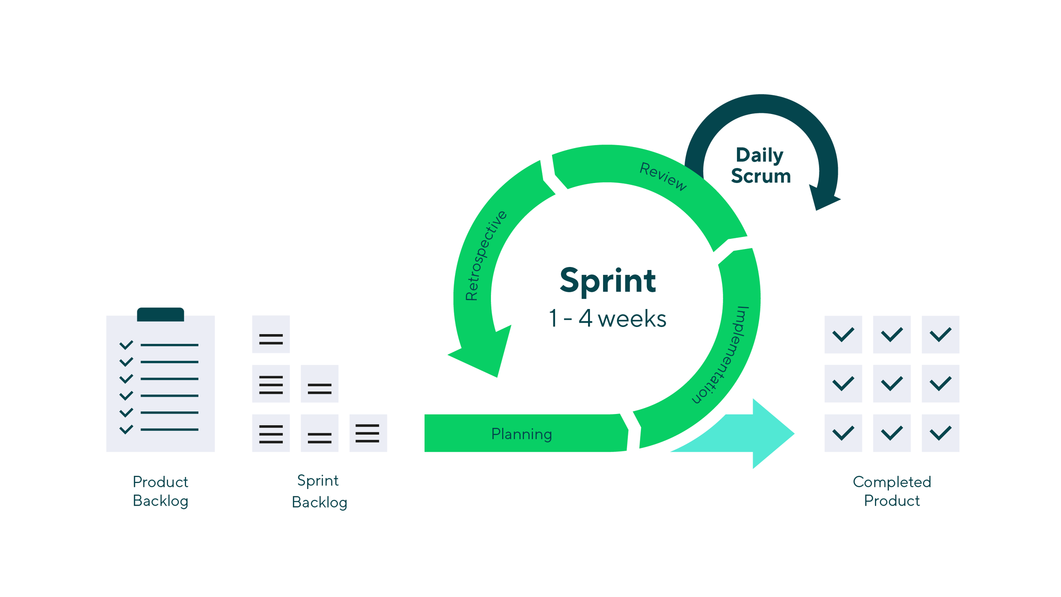Agile is a lightweight, flexible approach to managing projects, especially suitable for fast-moving or innovative environments.
At its core, Agile helps teams work in short cycles, adjust quickly to feedback, and deliver value more frequently. Agile concepts are particularly popular in software development but can be applied across many diverse industries, including marketing and manufacturing.
In this short introduction, we’ll take you through the basic fundamentals of Agile project management, including how it works, what makes it different, and where to go to learn more.
What’s Agile all about?
Agile isn’t just a project management style; it’s a mindset for handling uncertainty by breaking work into small bits, delivering fast, and adapting as you go.
While the application can differ depending on the team or work involved, the fundamentals of the Agile framework are fairly standard. If you’re thinking of testing the approach, bear in mind that:
- It’s not a silver bullet for immediate success — think of it more like a mindset that supports constant improvement
- It’s a way to stay flexible and work better together, particularly in high-pressure environments
- When it comes to introducing Agile concepts, it’s best to start small, reflect often, and adjust regularly
Take a look at the diagram below to see an example of how a typical Agile cycle might be used to manage short work sprints. These help to maintain momentum, continuously improve, and “fail fast” when necessary.


These are just some of the reasons why Agile is favored by teams who need to break large or long projects down into more manageable phases, particularly in fields that involve dense, structured work. It’ll come as no great surprise to learn that, according to TST Technology, the fastest-growing adopters of Agile are engineering and research and development teams.
If you’d like to see how Agile basics work in real life — including sprints, Scrums, and backlog management — check out this short explainer video.

Agile vs. traditional: Basic differences
Before Agile concepts were introduced, teams mostly took a traditional approach to project management. In fact, many still do, preferring a more established or straightforward way to work. Choosing the best option for you and your team will involve careful analysis of the advantages and disadvantages of both.
Take a look at the table below for a simple comparison between the two styles.
Concept | Agile basics | Traditional approach |
Work style | Iterative and adaptive | Sequential and rigid |
Delivery | Frequent small releases | One final delivery at project end |
Planning | Continuous and flexible | Fixed upfront planning |
Feedback | Regular feedback during the process | Feedback usually after project ends |
Change response | Welcomes change at any stage | Makes changes difficult or costly |
Team collaboration | Emphasizes self-organizing teams | Generally managed from the top down |
While different styles of project management work for different teams, one recent academic study suggested that Agile approaches resulted in a 21% higher rate of project success compared to traditional ways of working.
Explore more Agile concepts
For a deeper dive into Agile practices, take the time to explore our complete Agile guide, where you’ll find a detailed description of Agile principles, in addition to a comparison of the pluses and minuses of the approach.
The guide also includes a step-by-step guide on implementing an Agile framework, as well as some helpful templates to get you started.
You can also scroll through our list of frequently asked questions about different project management techniques. Prefer to see Agile in action? Take a free two-week trial of Wrike today.
Common questions about Agile
There are many reasons why one approach might work better than the other. Discover the key differences here: When To Use Agile vs. Waterfall
They’re both popular project management frameworks, but they’re not the same. Read our comparison of key Scrum and Agile concepts here: What Is the Difference Between Scrum and Agile?
It’s easy to get started with Agile projects. Learn what the process looks like here: What Is the Agile Project Process?


